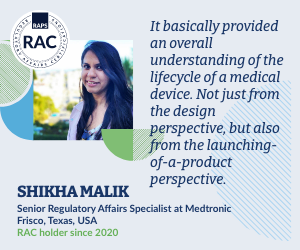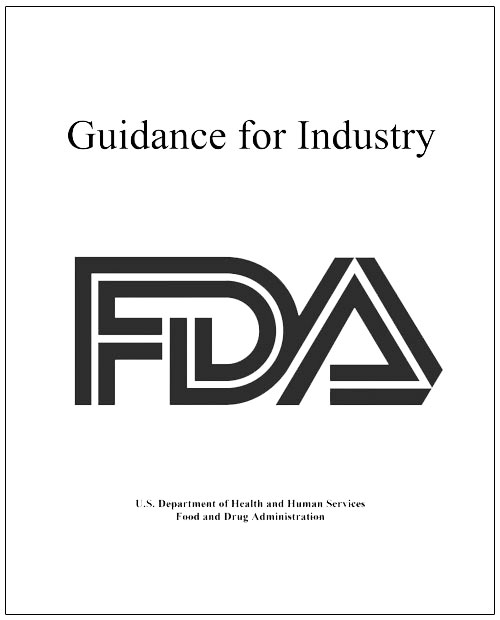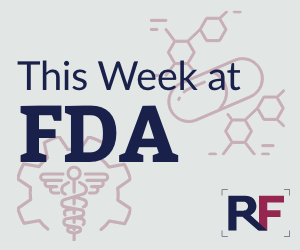FDA takes a step forward for machine learning with quantitative imaging guidance
![]() Regulatory News | 16 June 2022 |
Regulatory News | 16 June 2022 |
The US Food and Drug Administration finalized guidance on what to consider when using quantitative imaging algorithms in radiological device submissions. While most imaging diagnostics rely on qualitative readings by trained physicians, imaging devices increasingly rely on quantitative imaging results using machine learning.
On 15 June, FDA finalized its Technical Performance Assessment of Quantitative Imaging in Radiological Device Premarket Submissions guidance, which was first proposed in 2019. The document outlines the agency’s thinking on what manufacturers need to consider in their algorithms when relying on quantitative analysis to output results. (RELATED: CDRH drafts guidance on quantitative imaging, Regulatory Focus 18 April 2019)
In the guidance, FDA said that a sponsor’s premarket submission should include a technical description of the device’s quantitative imaging functions with enough detail for regulators to understand how it functions.
“In some instances, a more general description of the measurement process may be sufficient; however, you should provide a more detailed description of the processes for more complex quantitative imaging functions, to ensure FDA’s understanding of your device,” the agency said.
Sponsors should also include software documentation that details the software implementation of their algorithm, which entails including details such as a description of the quantitative imaging function, information on input data, image acceptance activities, the information presented to the user and the level of user interaction needed for the device to be used as intended.
Regulators cautioned that quantitative imaging values from medical images and imaging data may be affected by multiple sources of errors that sponsors should think about.
“Quantitative imaging values are usually subject to both systematic error and random variation,” FDA said. “Thus, a quantitative imaging value can, and usually does, differ from the true value of the measurand.”
“Errors may come from the acquisition of the medical images, patient characteristics, and the image processing algorithm,” it added. “An understanding of the sources of error, especially those with the largest impact on the measurand and the quantitative imaging values produced by your quantitative imaging function, is important for characterizing the performance of your quantitative imaging function.”
To track potential errors, FDA said that sponsors may be able to conduct a sensitivity analysis and lists areas where to look out for errors such as patient characteristics, image acquisition and image processing.
Another key consideration FDA wants sponsors to keep in mind is providing sufficient details in their product labeling, so the end-user understands the limitations of the quantitative imaging algorithm.
“Your device labeling should include sufficient information for the end-user to obtain, understand, and interpret the values provided by the quantitative imaging function,” the agency said.
Some of the information the agency wants to see in the labeling include a description of the measurand, a description of the algorithm inputs, performance specifications, and instructions for image acceptance or quality assurance activities to be performed by the user.
Guidance
On 15 June, FDA finalized its Technical Performance Assessment of Quantitative Imaging in Radiological Device Premarket Submissions guidance, which was first proposed in 2019. The document outlines the agency’s thinking on what manufacturers need to consider in their algorithms when relying on quantitative analysis to output results. (RELATED: CDRH drafts guidance on quantitative imaging, Regulatory Focus 18 April 2019)
In the guidance, FDA said that a sponsor’s premarket submission should include a technical description of the device’s quantitative imaging functions with enough detail for regulators to understand how it functions.
“In some instances, a more general description of the measurement process may be sufficient; however, you should provide a more detailed description of the processes for more complex quantitative imaging functions, to ensure FDA’s understanding of your device,” the agency said.
Sponsors should also include software documentation that details the software implementation of their algorithm, which entails including details such as a description of the quantitative imaging function, information on input data, image acceptance activities, the information presented to the user and the level of user interaction needed for the device to be used as intended.
Regulators cautioned that quantitative imaging values from medical images and imaging data may be affected by multiple sources of errors that sponsors should think about.
“Quantitative imaging values are usually subject to both systematic error and random variation,” FDA said. “Thus, a quantitative imaging value can, and usually does, differ from the true value of the measurand.”
“Errors may come from the acquisition of the medical images, patient characteristics, and the image processing algorithm,” it added. “An understanding of the sources of error, especially those with the largest impact on the measurand and the quantitative imaging values produced by your quantitative imaging function, is important for characterizing the performance of your quantitative imaging function.”
To track potential errors, FDA said that sponsors may be able to conduct a sensitivity analysis and lists areas where to look out for errors such as patient characteristics, image acquisition and image processing.
Another key consideration FDA wants sponsors to keep in mind is providing sufficient details in their product labeling, so the end-user understands the limitations of the quantitative imaging algorithm.
“Your device labeling should include sufficient information for the end-user to obtain, understand, and interpret the values provided by the quantitative imaging function,” the agency said.
Some of the information the agency wants to see in the labeling include a description of the measurand, a description of the algorithm inputs, performance specifications, and instructions for image acceptance or quality assurance activities to be performed by the user.
Guidance
© 2025 Regulatory Affairs Professionals Society.






-jpg.jpg.aspx?width=201&height=250&ext=.jpg)







